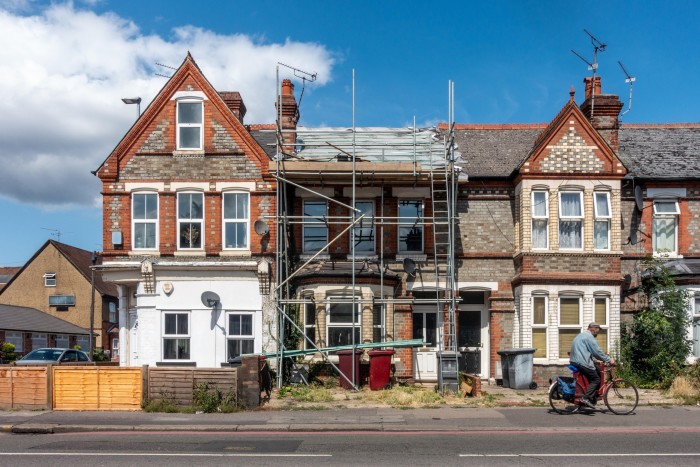
Moments of change usher in moments of hope. As the founder of a UK architectural practice, what can I ask from our new Labour government, given its overwhelming public mandate for change? If we want to “get Britain building again” as the party slogan goes, it will take a revolution in the planning system.
Planning is the single biggest challenge to our profession, to the provision and quality of our housing and to the environment in which we live.
My company’s projects are primarily private commissions. Yes, this is relatively narrow and rarefied. But architecture projects of any kind involve a fiat of sorts, they need to be willed into being. A collective will, that is.
Confidence is key. When I sit with a client, I can tell them precisely how the process will unfold. From concept to design development, to delivery. But the arbitrariness and opacity of the planning process offers no such guarantee.
Before planning went digital, a householder application could be outlined on two sides of A4. There followed a statutory decision period of eight to 13 weeks, depending on the scale of the development, with a fine on the local authority for any delays. Now it can take more than two years, 200 emails, plus an army of consultants, to push a project through. Occasional good work seems to come about in spite of the planning system rather than because of it.
Labour have proclaimed in their manifesto the staffing of 300 new planning officers. It’s a start. But given that more than tenfold this number left planning departments between 2010 and 2020, it will probably make little to no difference. We are dealing not only with increased housing demand, but a legacy of austerity, complicated by Brexit and the need for recovery post pandemic. We’re up against it. With each day that passes the planning backlog grows.
While my company is not yet in the mass housebuilding market, in recent years, from our experience, things have gone from bad to farcical.

At the outset, there is no assurance that an application will be seen at all, let alone processed within a reasonable timeframe. To take just one example from my practice, a crumbling Grade II*-listed home took two years to achieve planning permission, and then just as long for the conditions to be discharged. Light sleuthing on LinkedIn revealed that our case officer had left the authority six months earlier without a word to their clients.
Other projects have seen planning officers renege on recommendations many months after written confirmations. Others still have involved a bizarre series of off-the-record, “under the table”-type negotiations — a back and forth of horse-trading, which completely undermined the process.
Much like the broken NHS, the system, not the individuals, are to blame.
These issues remain even when projects have the investment and, in many cases, the legislation — for instance, the catalytic though not uncontroversial “Gummer’s law”, now implemented as Paragraph 84 of the National Planning Policy Framework. Put forward to ease planning deadlock on greenbelt land and take the great British country house tradition into a new age, its approvals for new buildings are subject to certain criteria: the proposal needs to be outstanding and enhance its setting. Assessment is by design review panel, appointed and paid for by the client. Endorsement is not an assurance of success, but it helps build confidence and, with it, momentum.
Why are such incentives restricted to rural areas? Quality across the board is, we are told, fundamental to the planning system. The promotion of quality ought therefore to be more widely dispersed, ensuring the best designs are fast tracked.
Excellence carries beyond aesthetic considerations. It has to do with the facilitating of better, safer environments, places contributing to psychosomatic and spiritual health. Excellence is about evidence of thought, care and consideration. It’s about intent. It’s about investment.
Planning departments need to be given the resources to undertake their work in a way that encourages good practice. Effective planning ought to be a clear process, undertaken with efficiency, and within a given timeframe, by competent teams with a realistic workload.
Migration from the public to private sector is not a new phenomenon. We’ve seen it in health services, education and now planning. We need to build incentives to draw people back into public authority work. If we haven’t the funds to incentivise this, then let’s encourage collaboration with private agencies to get things approved and built.
Again, design review panels are useful here, analogous in a way to the “super squads” mooted by the last government. By bringing in experienced and discerning built environment professionals to assess individual applications, planning officers may be freed to direct and execute policy.
Alternatively, planning authorities should charge more for a dedicated service, with better certainty.
The irony is, most things get approved, eventually. Around 85-90 per cent of proposals are passed, and that includes major residential schemes. The real risk isn’t failure — but delay. If my organisation’s projects stuck somewhere in planning were to be processed overnight, north of £100mn would be injected into the economy. Imagine this figure multiplied across architectural practices — and impacting builders and more — up and down the country.
We have a wealth of creative talent in this country, with a global reach, to which an underfunded and broken planning system is more an obstacle than an incentive. This needs to change.
Richard Parr is the founder and director of Richard Parr Associates
Find out about our latest stories first — follow @FTProperty on X or @ft_houseandhome on Instagram